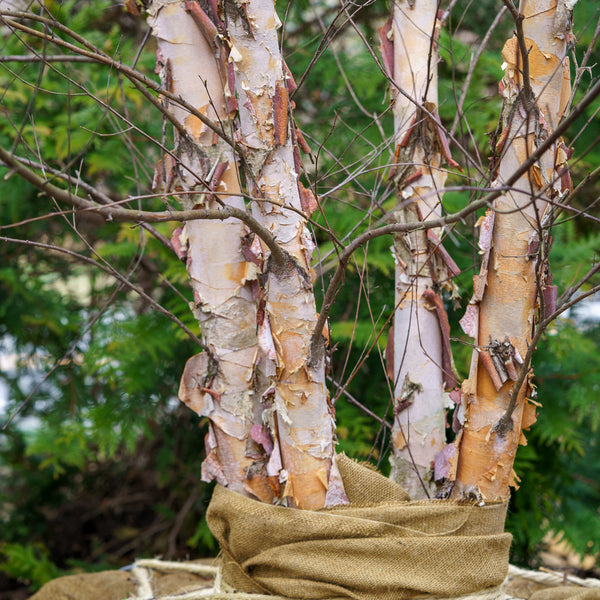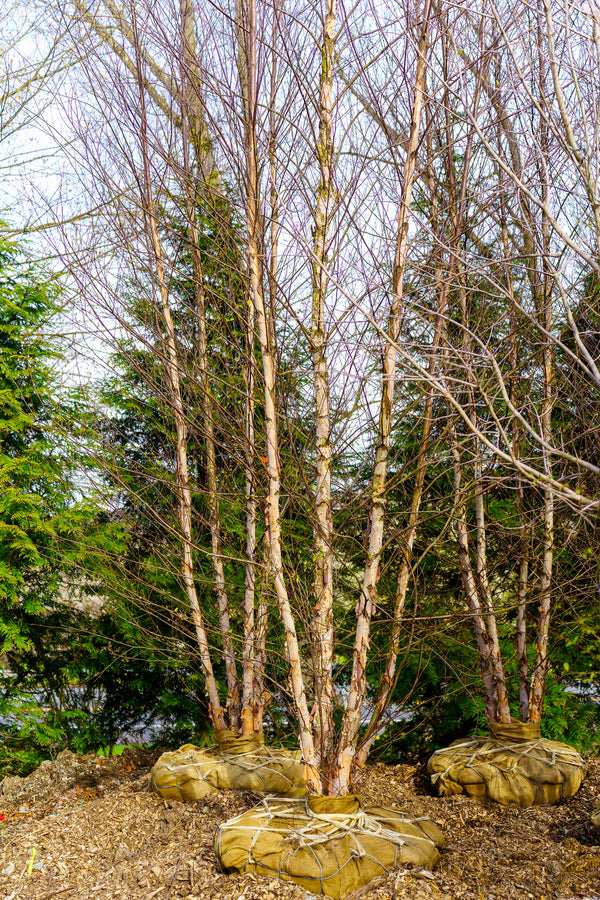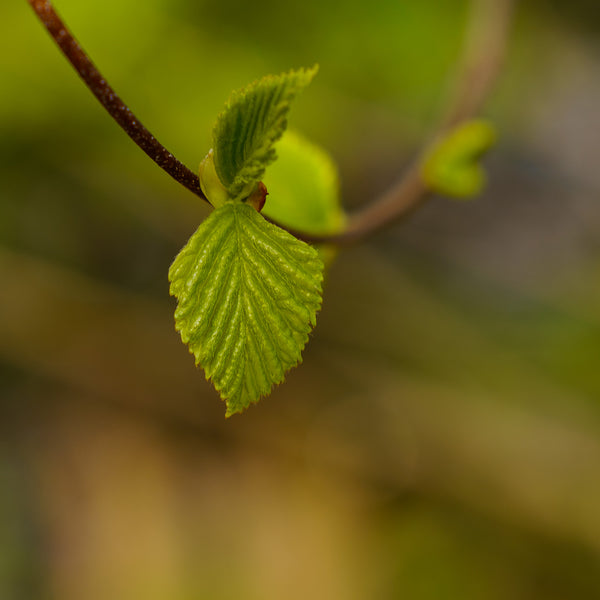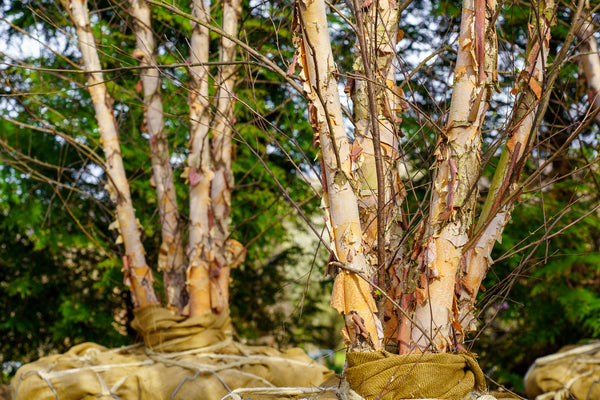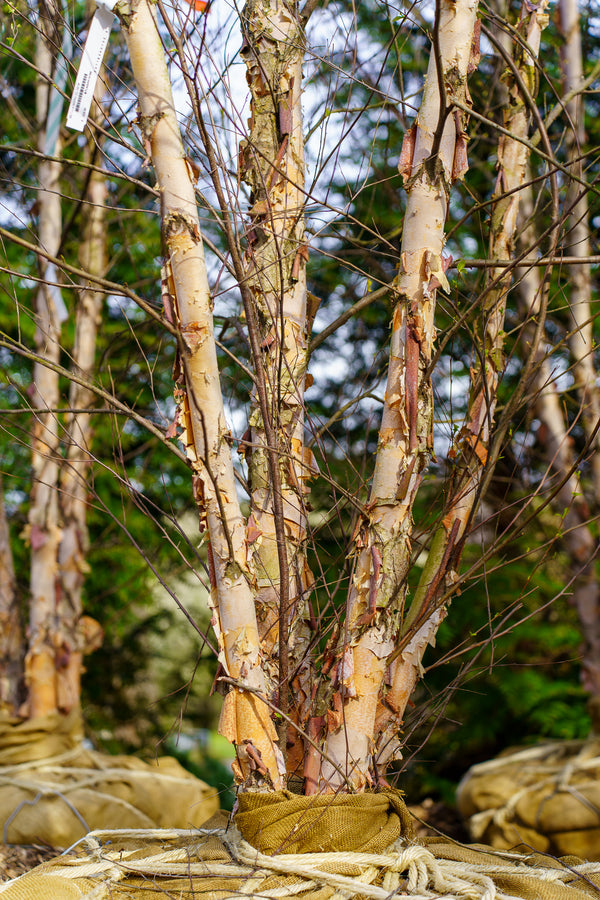River Birch
River Birch (Betula nigra)
River Birch (Betula nigra) is a versatile deciduous tree admired for its distinctive bark, graceful form, and ability to thrive in a wide range of conditions. Known for its beauty and resilience, River Birch is an excellent choice for both residential and commercial landscapes.
Distinctive Appearance
River Birch is easily recognized by its peeling, cinnamon to salmon-colored bark that provides year-round interest, even in winter. Its glossy green leaves turn a bright yellow in fall, while its pyramidal form and multiple trunks make it a striking focal point in the landscape.
Growing Conditions
- Sun Exposure: Full sun to partial shade
- Soil: Prefers moist, acidic soils but adapts well to clay, loam, or sandy conditions
- Water: Moderate to high; thrives in consistently moist areas and tolerates wet soil
- USDA Hardiness Zones: 4 to 9
- Mature Size: 40 to 70 feet tall, 30 to 60 feet wide
Ideal Uses in the Landscape
- Shade Tree: Provides cooling shade for yards, patios, and large open spaces.
- Focal Point: Its peeling bark and elegant structure make it a natural centerpiece in the landscape.
- Waterfront Planting: Thrives near ponds, streams, and other moist areas where few other trees excel.
- Wildlife Value: Provides habitat and food for birds and pollinators.
Low Maintenance Care
River Birch is hardy and adaptable, requiring minimal maintenance once established.
- Watering: Regular watering during establishment; mature trees tolerate occasional drought but prefer consistent moisture.
- Pruning: Prune during late summer or fall to shape the canopy and remove dead branches.
- Fertilizing: Apply a balanced fertilizer in early spring if growth appears slow or foliage looks pale.
- Mulching: Maintain a layer of mulch around the base to conserve moisture and protect roots.
Why Choose River Birch?
River Birch combines ornamental beauty with resilience, making it one of the most popular native trees for landscapes.
- Distinctive Bark: Year-round interest from peeling, cinnamon-colored bark.
- Adaptable: Thrives in a variety of soil types and tolerates wet conditions.
- Fast Growth: Provides quick shade and fills in landscapes rapidly.
- Native Tree: Supports local ecosystems and wildlife.
For those seeking a fast-growing, low-maintenance, and visually striking native tree, River Birch is an outstanding choice.
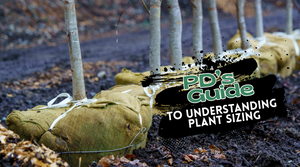
OUR SIZING
Not sure what 2 inch B&B or 30 Gallon Clump really means? This guide breaks down all our plant size terms so you know exactly what to expect, whether you're ordering online or picking up at our nursery. From caliper measurements to container volumes, we've decoded our system to help you shop with confidence.

Plant Detectives Shipping Guide
Nationwide plant shipping made easy. Learn how we ship trees, shrubs, annuals and perennials. No order too big or too small. Fast, careful, and contractor-friendly.

